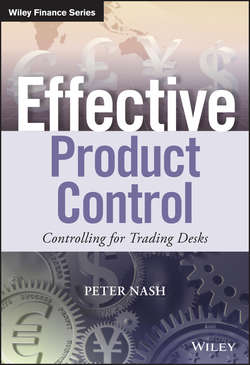Читать книгу Effective Product Control - Nash Peter - Страница 19
На сайте Литреса книга снята с продажи.
Part 1
Working in Product Control
CHAPTER 2
Changing Landscape of Product Control
Greater Focus on Liquidity
ОглавлениеLike any company, a bank needs a certain level of cash to operate, but during the GFC, the financial markets experienced prolonged periods of illiquidity. During this time, Northern Rock, a British bank, could not continue operating as their interbank counterparts ceased providing loans, and retail depositors withdrew their money in vast sums. This is known as a run on the bank. As a result of this illiquidity, the banks, regulators and the BIS started to place greater emphasis on a bank's liquid assets and their funding profile. In Basel III, the BIS introduced two requirements:
1. Liquidity Coverage Ratio (LCR)
“The objective of the LCR is to promote the short-term resilience of the liquidity risk profile of banks. It does this by ensuring that banks have an adequate stock of unencumbered high-quality liquid assets (HQLA) that can be converted easily and immediately in private markets into cash to meet their liquidity needs for a 30 calendar day liquidity stress scenario. The LCR will improve the banking sector's ability to absorb shocks arising from financial and economic stress, whatever the source, thus reducing the risk of spillover from the financial sector to the real economy.”4
2. Net Stable Funding Ratio (NSFR)
The objective of the NSFR is to “promote resilience over a long time horizon by creating additional incentives for banks to fund their activities with more stable sources of funding on an ongoing basis. The NSFR…supplements the LCR and has a time horizon of one year. It has been developed to provide a sustainable maturity structure of assets and liabilities.”5
The function responsible for maintaining the appropriate levels of liquidity is treasury. To influence better funding behaviour by the trading desks, treasury started to penalize trading desks who were funding themselves ineffectively; for example, buying a 2-year corporate bond and funding that purchase using an overnight loan from treasury, which is known as a tenor mismatch. Conversely, the trading desk could be rewarded if they were overfunding their assets, as this excess term funding could be used to provide funding to other business. For example, borrowing $100 million for two years to fund the purchase of $90 million two-year government bonds.
As product control reports the financial impact of these penalties and rewards in the P&L, the business relied on product control to identify which positions (assets and liabilities) were driving these P&L entries. For product control to assist the business they needed to understand the business' balance sheet, specifically the size and tenor of the asset and liabilities, and how treasury viewed this construction from their funding paradigm.
4
Bank for International Settlements (BIS). Basel Committee on Banking Supervision, “Basel III: Liquidity The Liquidity Coverage Ratio and liquidity risk monitoring tools,” January 2013, Introduction. http://www.bis.org/publ/bcbs238.pdf.
5
Ibid.
